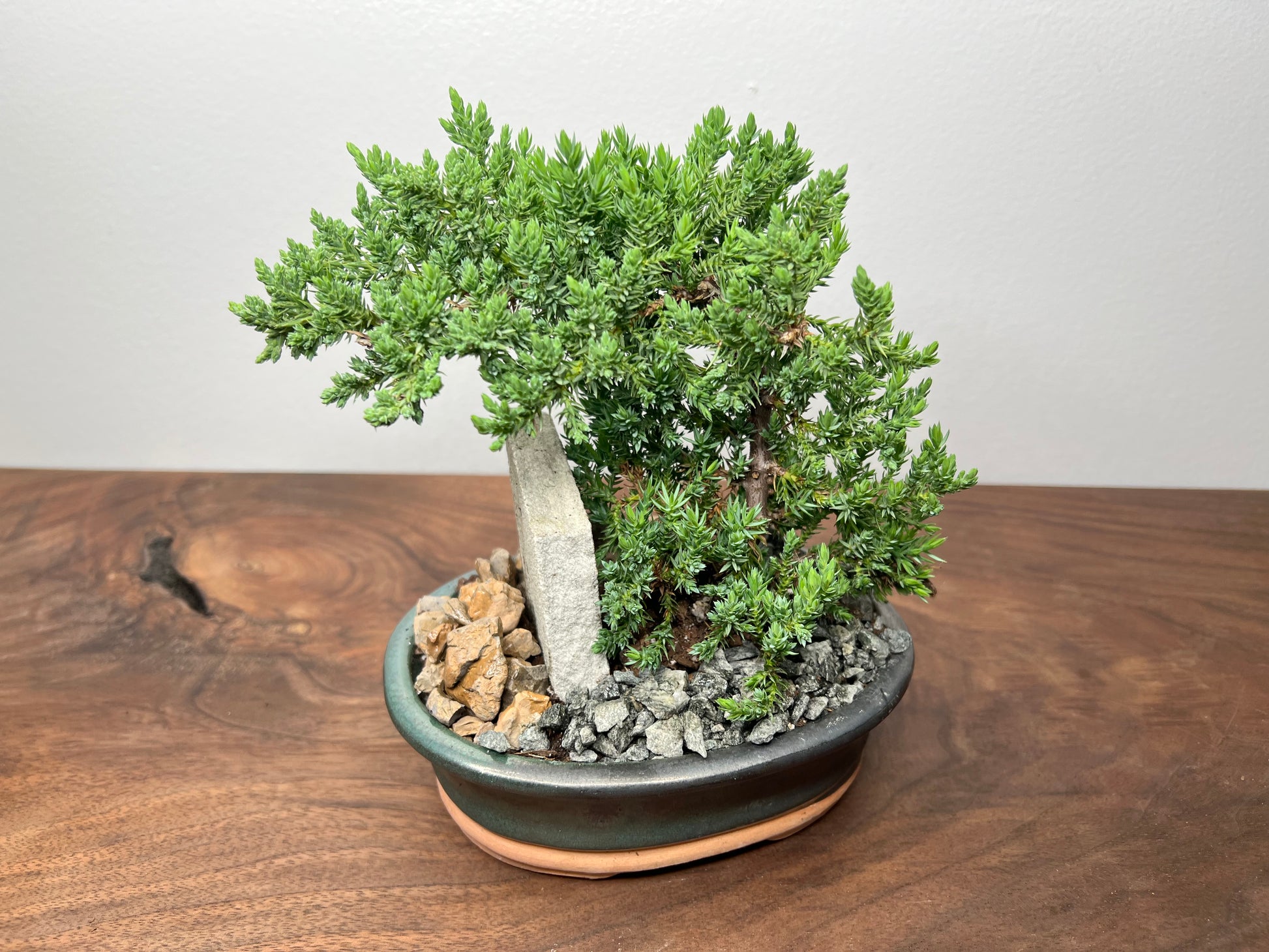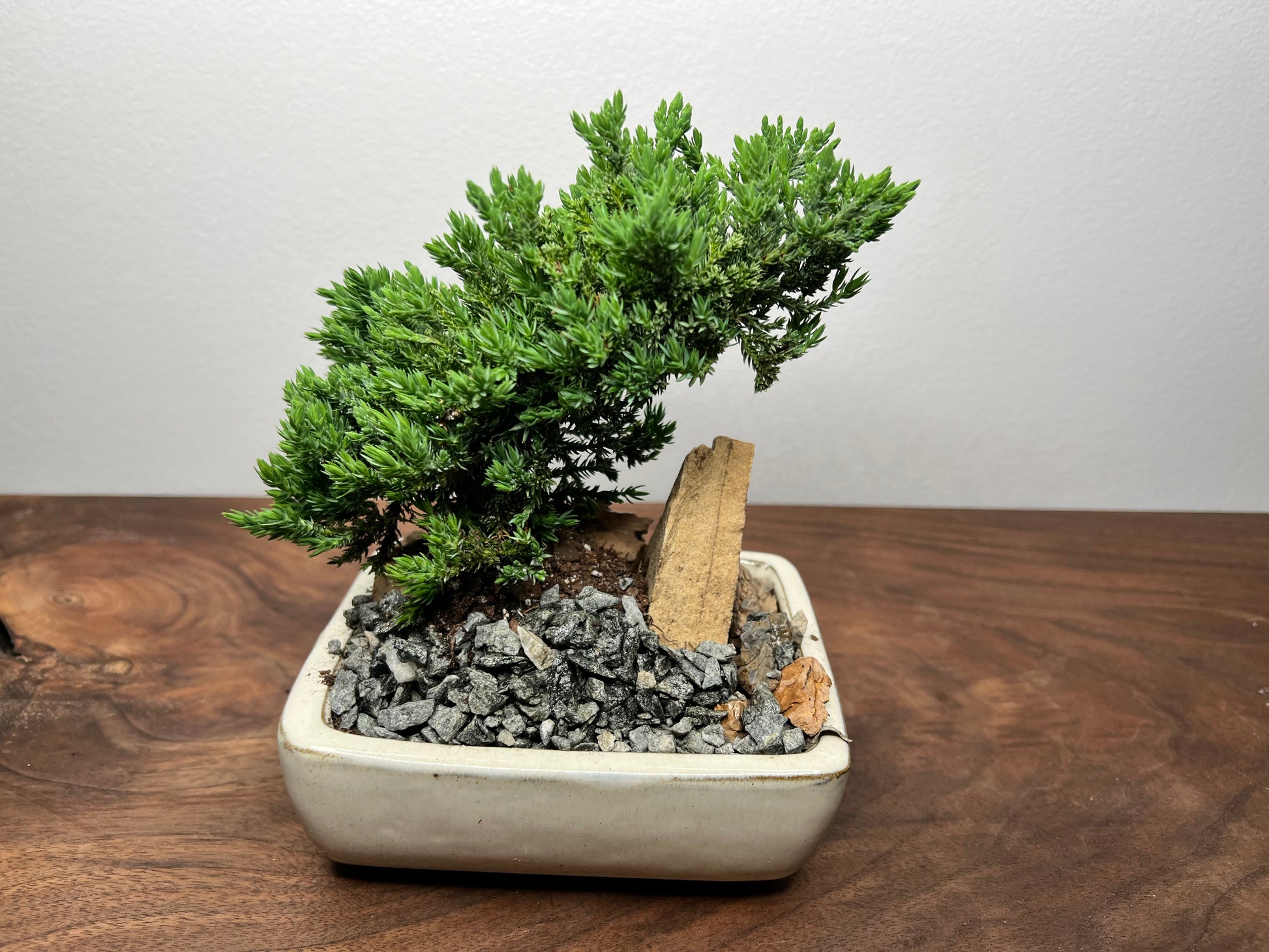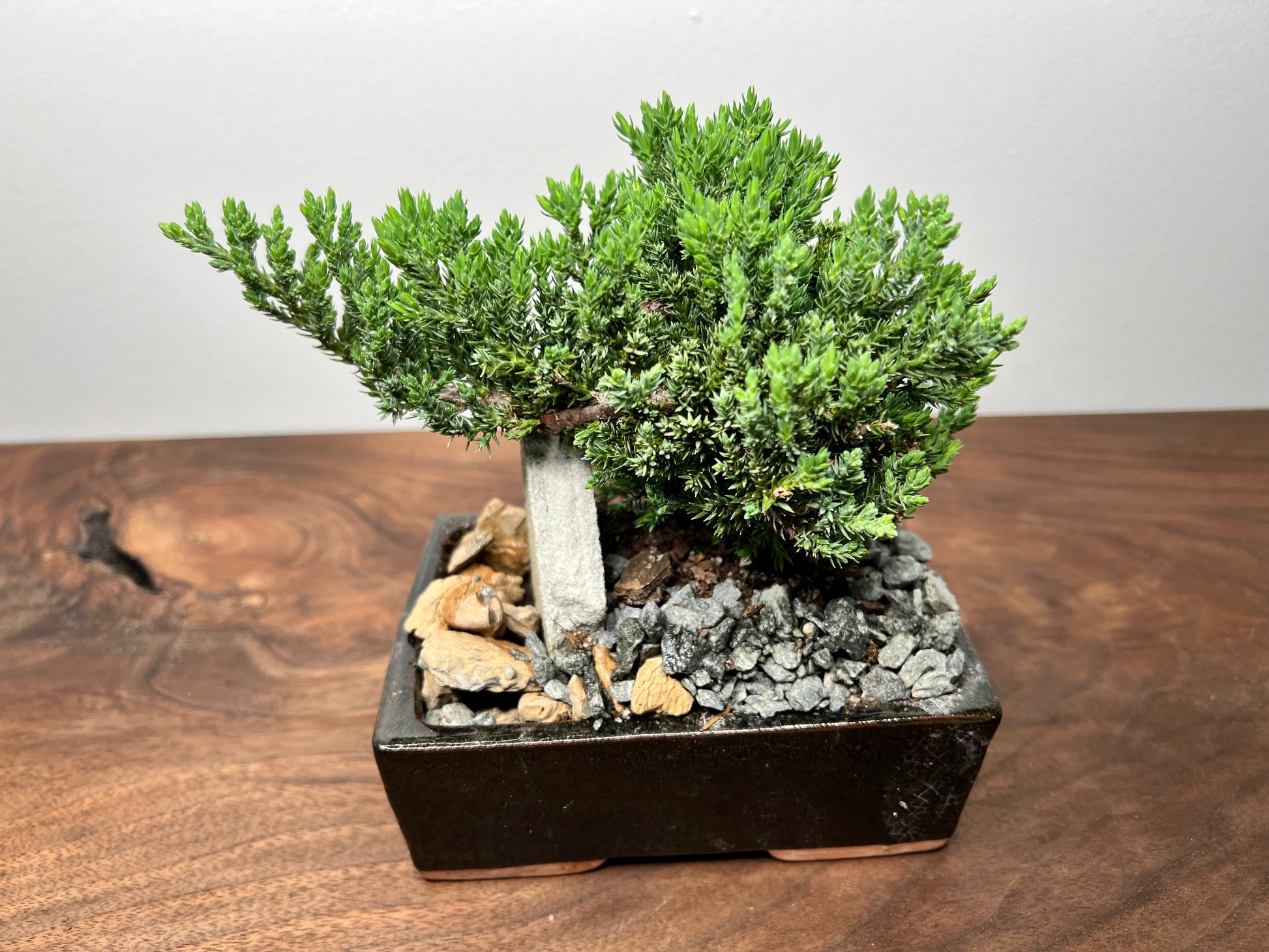The Rooted Plant Shop
Bonsai tree 6”
Bonsai tree 6”
Couldn't load pickup availability
Juniper bonsai requires attention to its watering, light, pruning, and overall environment. Here’s a guide to help you take care of it:
1. Light
- Location: Juniper bonsai trees need a lot of sunlight, ideally 4-6 hours of direct sunlight each day. They are best kept outdoors, as they thrive in natural conditions.
- Indoors: If kept indoors, place it in a sunny window with plenty of natural light. A grow light can be used to supplement if necessary.
2. Watering
- Soil Moisture: Water your juniper bonsai when the top of the soil feels dry to the touch, but don’t let it dry out completely. Ensure the pot has good drainage to prevent root rot.
- Watering Technique: Water thoroughly, allowing the water to drain out of the bottom of the pot. Avoid leaving water sitting in the saucer.
3. Temperature and Humidity
- Junipers prefer cooler temperatures, generally between 55-75°F (13-24°C). They are not suited for extreme heat or frost, so protect them during very hot or cold spells.
- They do best in moderate humidity. If indoors, you might want to increase humidity by using a humidity tray or misting occasionally.
4. Pruning and Shaping
- Pruning: Regular pruning is essential to maintaining the shape and health of your juniper bonsai. Trim any long shoots or branches, particularly those growing inwards or crossing other branches.
- Wiring: Junipers are flexible enough for wiring to shape their branches, but avoid excessive bending, as this can damage the tree.
- Deadwood: Junipers often develop attractive deadwood features (called "jin" and "shari"), which can be shaped over time. However, avoid excessive deadwood removal, as it can stress the tree.
5. Fertilizing
- Frequency: Fertilize during the growing season (spring to early autumn) every 4-6 weeks with a balanced liquid fertilizer or slow-release granules.
- Dormancy: In winter, when the tree is dormant, reduce or stop fertilizing.
6. Repotting
- When to Repot: Juniper bonsai should be repotted every 2-3 years. This helps refresh the soil and trim back any overgrown roots. Repot in early spring, just before the growing season starts.
- Root Pruning: Trim the roots carefully when repotting, removing any dead or excessively long roots. Be sure to use a well-draining bonsai soil mix.
7. Pest and Disease Management
- Junipers are relatively pest-resistant but can occasionally attract aphids, scale insects, or spider mites. Inspect the tree regularly and treat any infestations promptly with insecticidal soap or neem oil.
- Keep an eye out for fungal infections, especially in humid conditions. Proper watering and good airflow can help prevent this.
Share
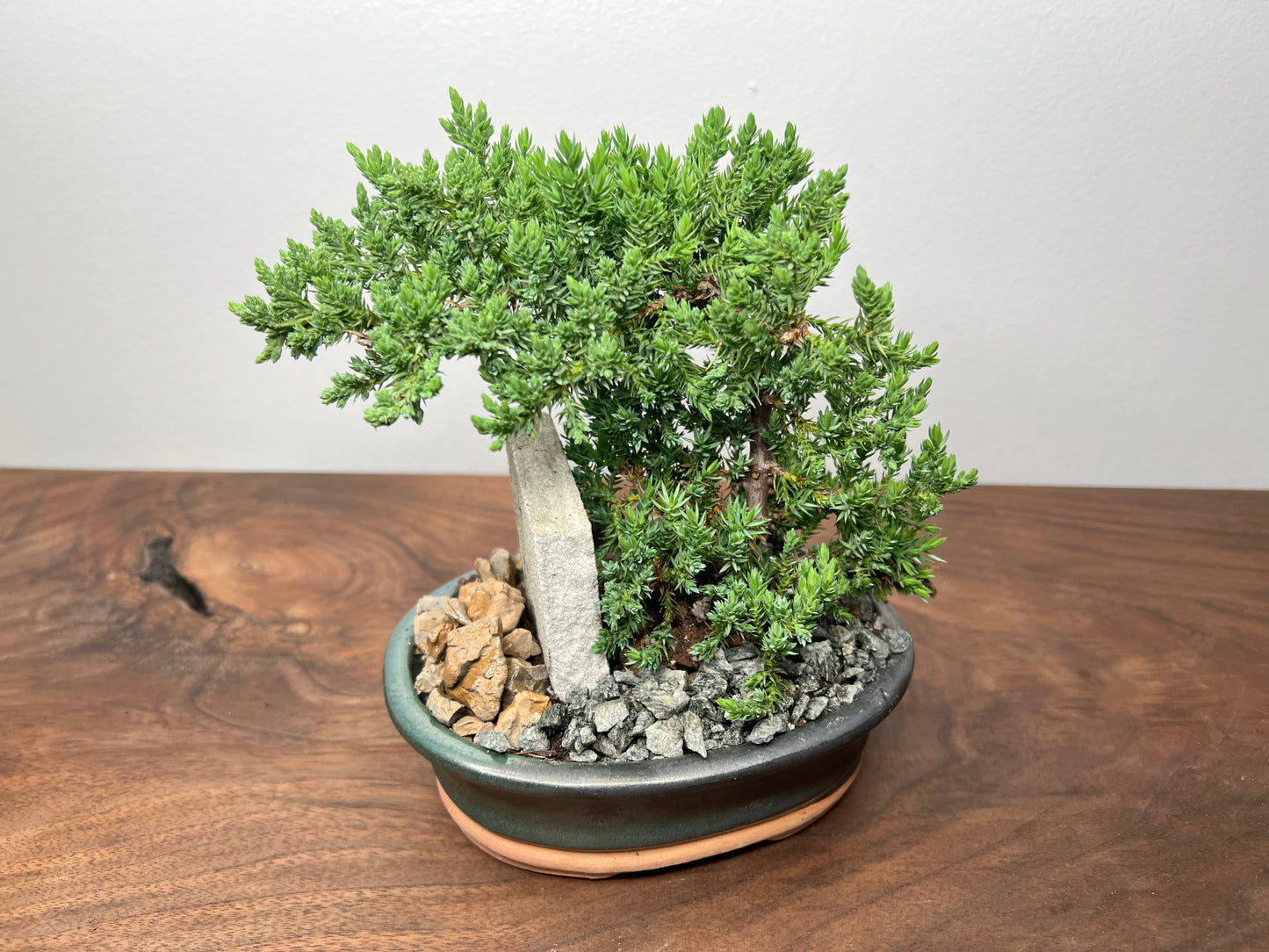
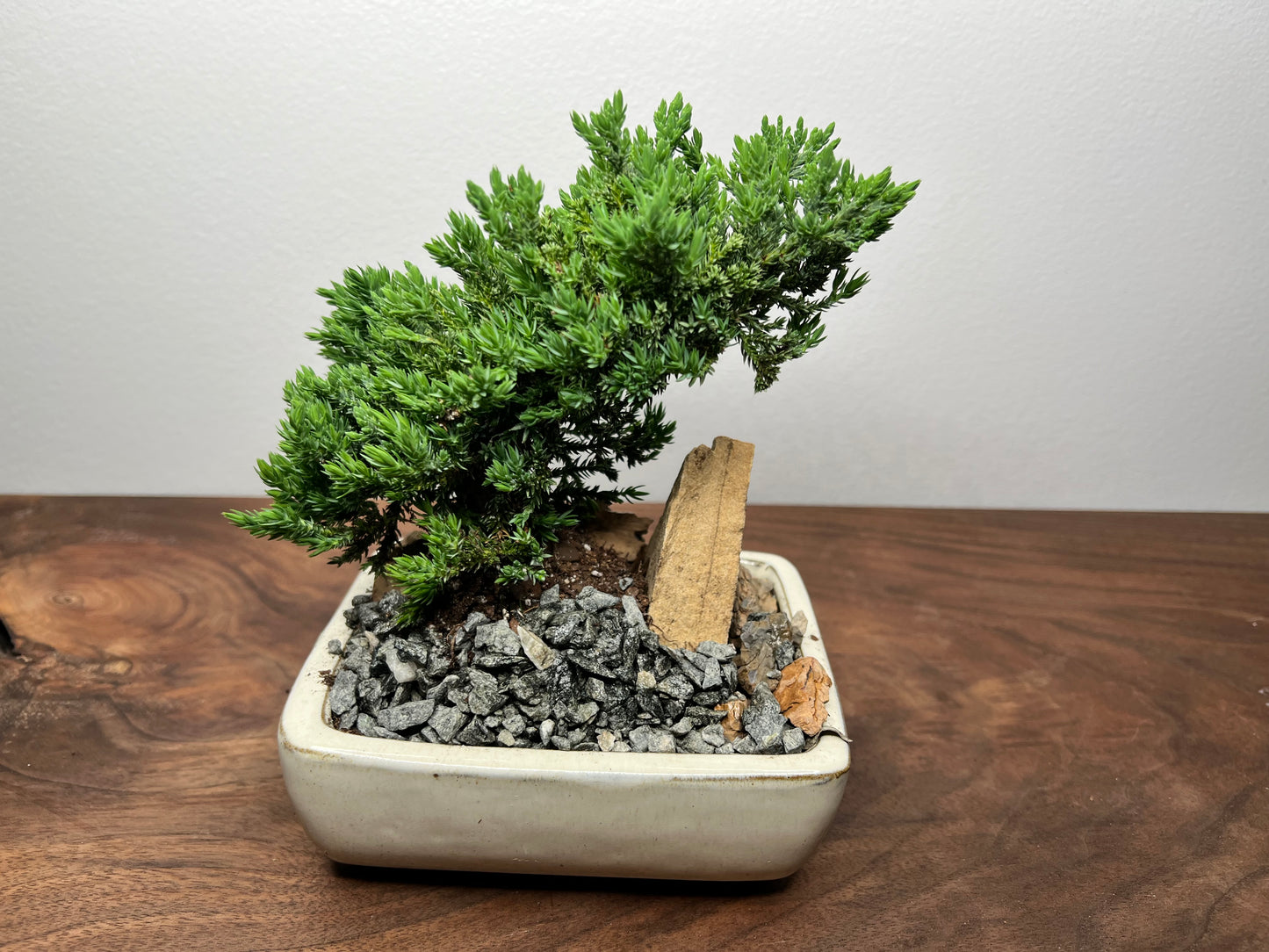
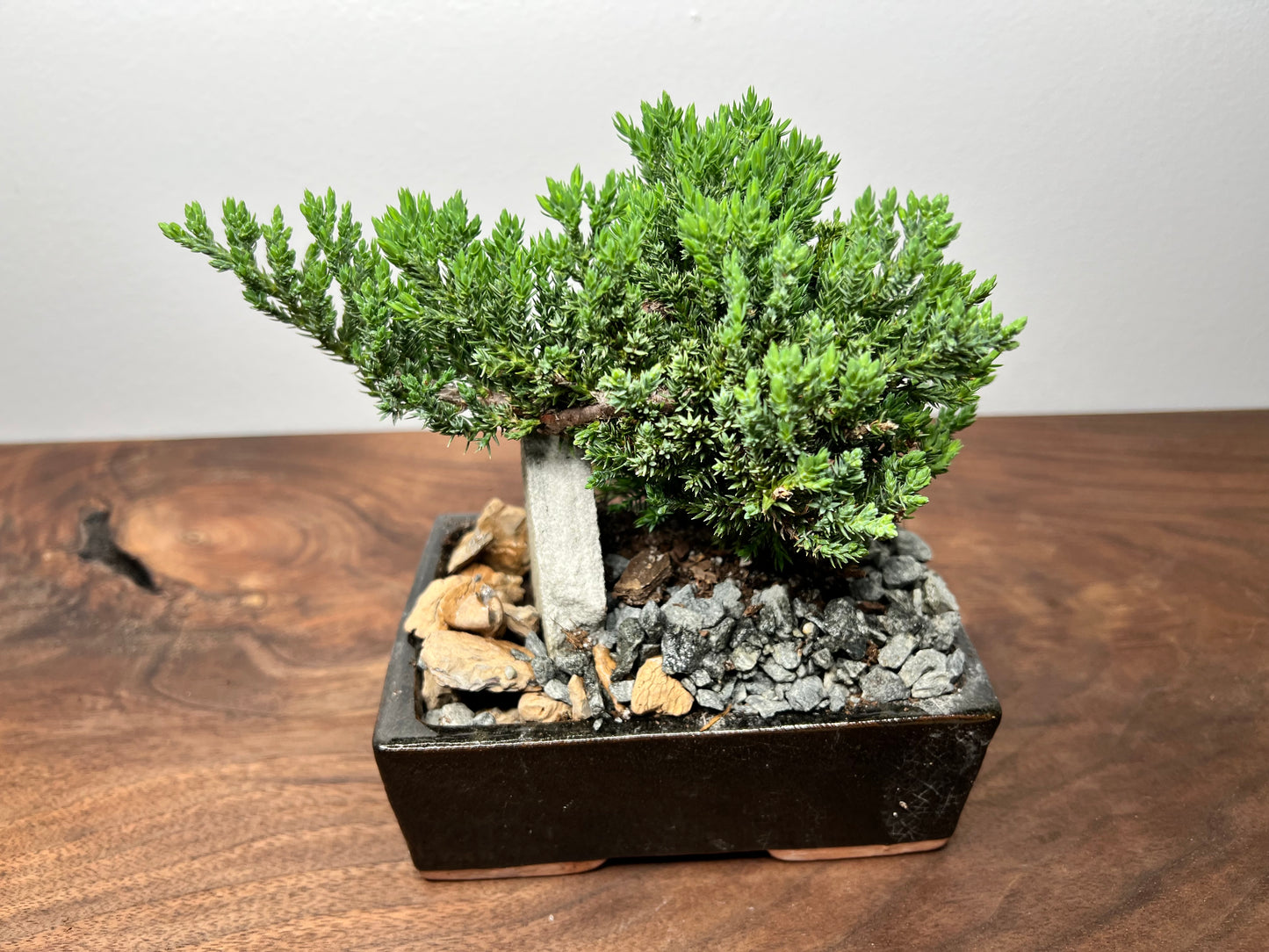
Let customers speak for us
from 357 reviewsMican’s are now my new favorite. I live in SC and the package was delivered in perfect shape. It was secure in the box. It’s currently doing great!

I love the tiny versions of things and this lil plant is no exception! Its beautiful! Arrived in perfect condition and was packaged wonderfully!

Received my stunning alocasia in just a few days and she’s adjusting nicely! I opted in for the safe weather shipping and it was packed well. I’ll definitely order from the rooted plant shop again. All because my TIK tok page told me to use 70% alcohol (which is a collection saving trick!)!!

This shop is top notch! Every plant arrives with perfect shipping care. If you follow the shop on social media you’ll learn so much!

Awesome plant , arrived very healthy and happy.

I love how my plants were so well packaged and arrived undamaged

I've had a lot of plants in my life, but this is probably the most unusual I've tried! I've also had quite a few real stones in my life as I grew up in a small family-owned gravel pit business! Melanie is so easy to work with, it is pleasure supporting her business.


